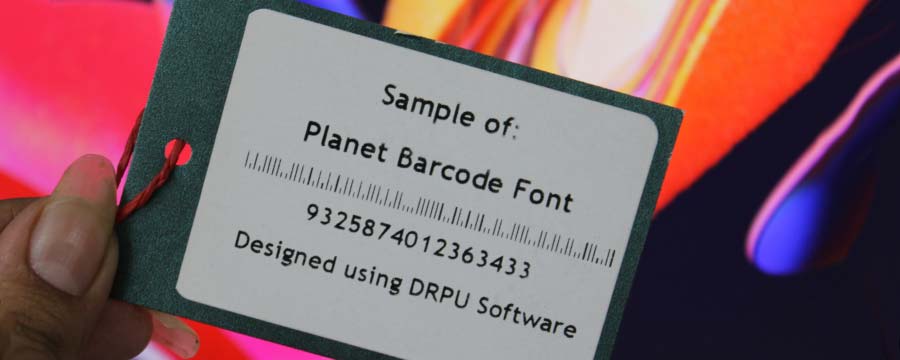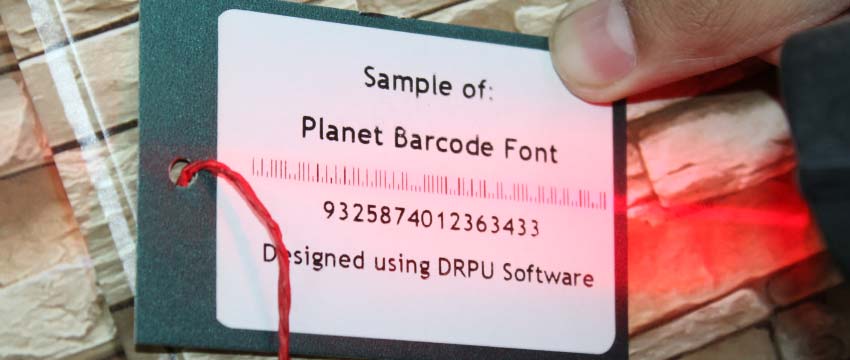Related Topics:
Generate a Planet Barcode
Generating a Planet barcode is a relatively simple process that can be done using specialized software or online barcode generators. Here are the general steps for generating a Planet barcode:

-
Determine the Information to be
Encoded:
The Planet barcode is designed to encode the ZIP code and delivery point code (DPC) of each piece of mail. The ZIP code is a five-digit number that identifies the destination city or town, while the DPC is a two-digit number that identifies the specific delivery location within the ZIP code.
-
Choose a Barcode Generator:
There are many software programs and online tools available for generating Planet barcodes. Some popular options include BarTender, NiceLabel, and OnlineLabels.com.
-
Enter the Information:
Once you have chosen a barcode generator, enter the ZIP code and DPC information for each piece of mail that you want to encode. Some generators may allow you to enter this information manually, while others may allow you to import data from a spreadsheet or other source.
-
Choose a Barcode Symbology:
The Planet barcode is typically generated using the POSTNET symbology, which is a type of barcode that uses variable-height bars to represent the ZIP code and DPC information
-
Set the Parameters:
Depending on the barcode generator that you are using, you may need to set various parameters for the barcode, such as the size, resolution, and orientation. These parameters will affect the readability of the barcode and may need to be adjusted depending on the specific printing and scanning equipment that you are using.
-
Generate the Barcode:
Once you have entered the information and set the parameters, you can generate the Planet barcode. The barcode will typically be displayed on the screen or saved as an image file that can be printed and attached to each piece of mail.
-
Test the Barcode:
Before using the barcode for actual mail delivery, it is important to test it to ensure that it can be accurately read and decoded by your scanning equipment. This can help to avoid delays or misdelivery caused by unreadable barcodes.
Conclusion: Overall, generating a Planet barcode is a relatively straightforward process that can be done using specialized software or online tools. By following the steps outlined above, you can create accurate and readable barcodes for use in sorting and delivering mail.
Download and Install Barcode Software
Print a Planet Barcode
Printing a Planet barcode requires careful attention to detail to ensure that the barcode is clear, accurate, and readable. Here are the general steps for printing a Planet barcode:
-
Choose a Printing Method:
There are several printing methods that can be used to print Planet barcodes, including inkjet printing, laser printing, and thermal transfer printing. The choice of printing method will depend on factors such as the volume of mail being processed, the printing equipment available, and the desired level of accuracy and resolution.
-
Select the Appropriate Printer Settings:
Once you have chosen a printing method, you will need to select the appropriate printer settings to ensure that the barcode is printed clearly and accurately. These settings may include parameters such as the print resolution, the darkness or intensity of the ink or toner, and the type and size of the label or paper being used.
-
Configure the Software or Application:
Before printing the barcode, you will need to configure the software or application that you are using to generate the barcode. This may involve selecting the appropriate barcode symbology, entering the ZIP code and DPC information, and adjusting other parameters such as the barcode size and orientation.
-
Print the Barcode:
Once you have configured the software and printer settings, you can print the Planet barcode. Be sure to verify that the barcode is clear and accurate before proceeding to the next step.
-
Apply the Barcode to the Mail:
After printing the barcode, you will need to apply it to each piece of mail in a way that ensures that it is visible and scannable. This may involve affixing the barcode to the envelope or package using adhesive labels, inkjet or laser printing, or other methods.
-
Verify the Barcode Readability:
Before sending the mail, it is important to verify that the barcode can be accurately read and decoded by your scanning equipment. This can be done using specialized barcode verification software or by manually scanning the barcode with a barcode scanner to ensure that the data is correctly transmitted.
By following these steps, you can print accurate and readable Planet barcodes that will enable your mail to be sorted and delivered more quickly and efficiently. Remember to always test and verify the readability of the barcode before sending the mail, as unreadable barcodes can cause delays and errors in the delivery process.
Scan a Planet Barcode
Scanning a Planet barcode is a straightforward process that can be accomplished using a handheld barcode scanner or other barcode scanning equipment. Here are the general steps for scanning a Planet barcode:
-
Position the Barcode Scanner: Before scanning the barcode, position the barcode scanner so that it is perpendicular to the barcode and at a distance of approximately 6-10 inches away. This will ensure that the scanner can capture a clear and accurate image of the barcode.
-
Align the Barcode: Align the barcode so that it is parallel to the laser or scanning line of the barcode scanner. This will help to ensure that the scanner can accurately read the data encoded in the barcode.
-
Activate the Scanner: Depending on the type of barcode scanner you are using, you may need to press a button or trigger to activate the scanner. Once the scanner is activated, it will emit a laser or other type of scanning signal that will read the barcode.
-
Wait for the Scanner to Capture the Data: Once the scanner has been activated, wait for it to capture the data encoded in the barcode. This may take only a few seconds, depending on the size and complexity of the barcode.
-
Verify the Scanned Data: After the scanner has captured the barcode data, verify that it is accurate and complete. This may involve comparing the data to the original data source or using specialized software to verify the accuracy of the data.
-
Process the Scanned Data: Once the barcode data has been verified, it can be processed according to your specific application or use case. For example, if the barcode is being used to sort mail, the data can be used to determine the appropriate destination for the mail.
By following these steps, you can easily and accurately scan Planet barcodes using a handheld scanner or other barcode scanning equipment. Remember to position the scanner correctly and verify the accuracy of the scanned data before proceeding to further processing or use.
Types of Devices That Can Read Planet Barcode

-
Mobile Devices:
Many smartphones and tablets are equipped with built-in barcode scanners that can read Planet barcodes. These devices use the camera and specialized software to capture the barcode and decode the data.
-
Point-of-sale (POS) Systems:
POS systems used in retail settings often include barcode scanners that can read Planet barcodes. These systems are designed to quickly and accurately capture the data encoded in the barcode and process the transaction.
-
Stationary Barcode Scanners:
Stationary barcode scanners are larger devices that are often used in industrial or commercial settings. They can be fixed to a surface or mounted on a stand and use advanced imaging technology to scan the barcode and capture the data.
-
Computer Peripherals:
Some computer peripherals, such as barcode readers that plug into a USB port, can also be used to read Planet barcodes. These devices typically rely on specialized software to capture and decode the barcode data.
-
Industrial Equipment:
In some industrial settings, barcode readers may be integrated into other types of equipment, such as conveyor belts, to read Planet barcodes and automatically sort or process materials.
-
Handheld Barcode Scanners:
Handheld barcode scanners are the most common type of device used to read barcodes. These scanners typically use laser or LED technology to scan the barcode and capture the encoded data. They can be held in the hand and easily moved across the barcode to capture the data.
In general, any device that is capable of reading linear barcodes should be able to read Planet barcodes. However, it is important to ensure that the device is compatible with the specific barcode symbology and that it is configured to read the correct number of digits in the barcode. This can often be done through software settings or configuration options on the device itself.
Download and Install Barcode Software
Planet Barcode Can be Used Internationally
Planet barcode can be used internationally, as it is a globally recognized barcode symbology. Planet barcode was developed by the United States Postal Service (USPS) to encode tracking information on mail pieces, but it has since been adopted by many other organizations around the world for a variety of applications.
Planet barcode is designed to be used in conjunction with a postal routing barcode, which provides additional information about the destination of the mail piece. The postal routing barcode can be either a POSTNET barcode or an Intelligent Mail barcode (IMb), depending on the country and postal service.
The use of Planet barcode is not limited to any particular country or region. In fact, it is often used in international shipping and logistics applications, where it can be used to track packages and other items as they move across borders.
To ensure that Planet barcode can be read and processed correctly in different countries, it is important to follow standard barcode formatting guidelines and ensure that the barcode is printed clearly and legibly. In addition, it may be necessary to adjust the barcode scanner settings or software to ensure that it is configured to read the correct number of digits in the barcode and to interpret the encoded data correctly.
Conclusion: Overall, Planet barcode is a versatile and widely recognized barcode symbology that can be used effectively in many different international applications. Its use in conjunction with other postal routing barcodes allows for accurate and efficient tracking of mail and packages, and it is likely to remain a popular barcode symbology for years to come.